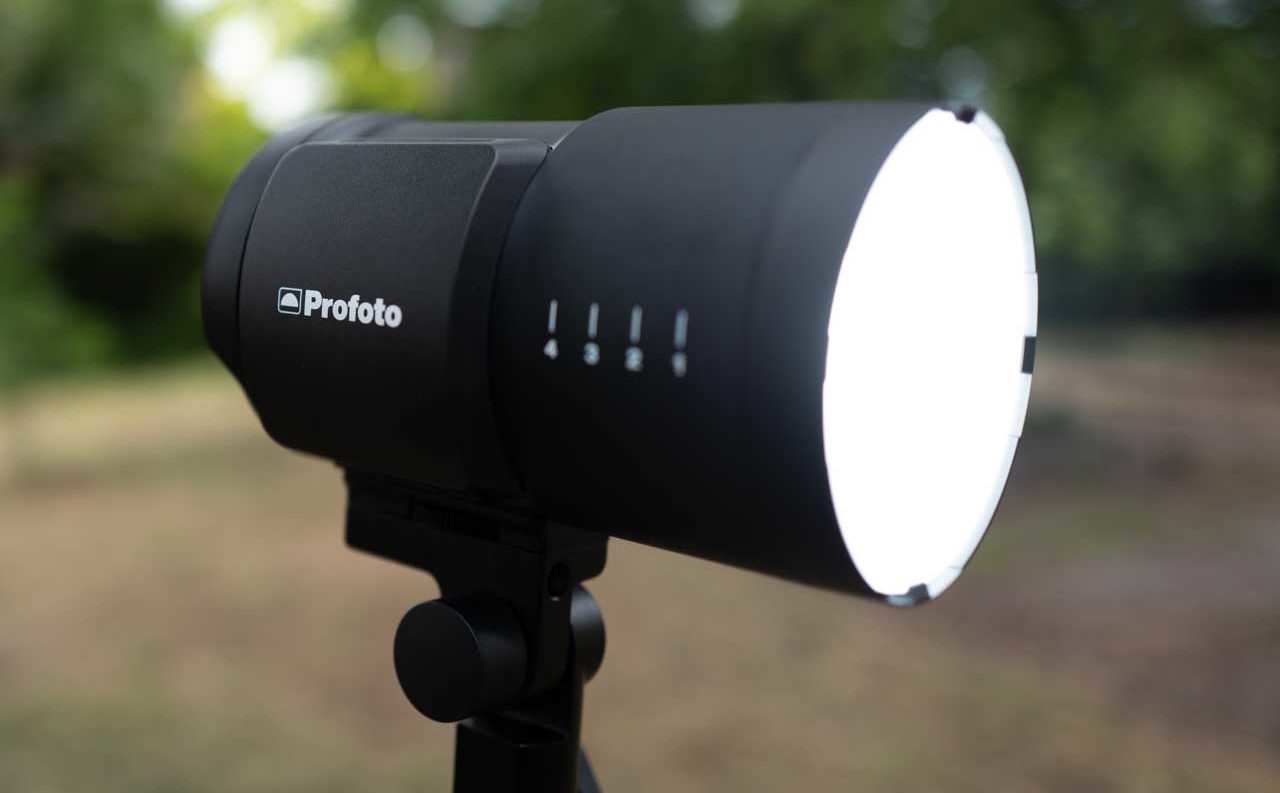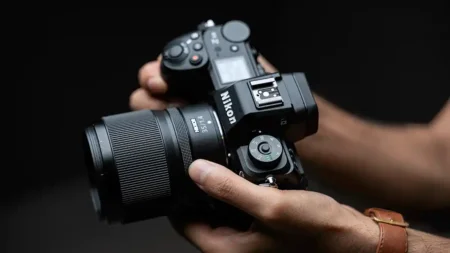Snap Verdict
The Profoto B10 is a small, lightweight, portable and powerful studio strobe. At 250Ws, it may not have the headline-grabbing power numbers of some Chinese flash brands, but don’t be fooled; the Profoto B10 packs a powerful and technological punch.
Features
Profoto‘s B10 is a portable cordless off-camera flash that’s designed to slip in your bag amongst your lenses. At 250Ws, it produces around 5x more light than the average speedlight or flashgun.
There’s also a powerful modelling light built in which can be used as a continuous light for stills or video.
Naturally, the B10 is also compatible with Profoto’s studio accessories and it has a removable stand mount.
The B10’s rechargeable battery is removable for separate charging, but it can also be charged while you’re using the light.
Remote Control
The B10 can be controlled wirelessly and triggered by any Profoto AirTTL remote, the Profoto A1, A1X or Connect. The range is up to 300m/1000ft and it can be used in TTL or manual mode.
Specifications
- Max energy: 250Ws
- Energy range: 10 f-stops (1.0-10)
- HSS energy range: 10 f-stops (1.0-10)
- Continuous light: Max 2500 lumens
- 3000-6500 Kelvin
- CRI 90-96
- Battery capacity: Up to 400 full power flashes or up to 75 minutes with max continuous light
- Battery charging: Up to 1.5 hours with Battery charger 3.0A
- Size: 175 × 150 x 110 mm (6.9 × 5.9 × 4.3 in) including stand adapter or 175 x 100 x 110 mm (6.9 x 3.9 x 4.3 in) excluding stand adapter
- Weight: 1.5 kg (3.3 lb) incl. battery & stand adapter
Build and Handling
Like all Profoto lights, the B10 is built like a tank. It has a smooth finish, feels robust and should the worse happen and you drop the B10, it would probably just keep on working.
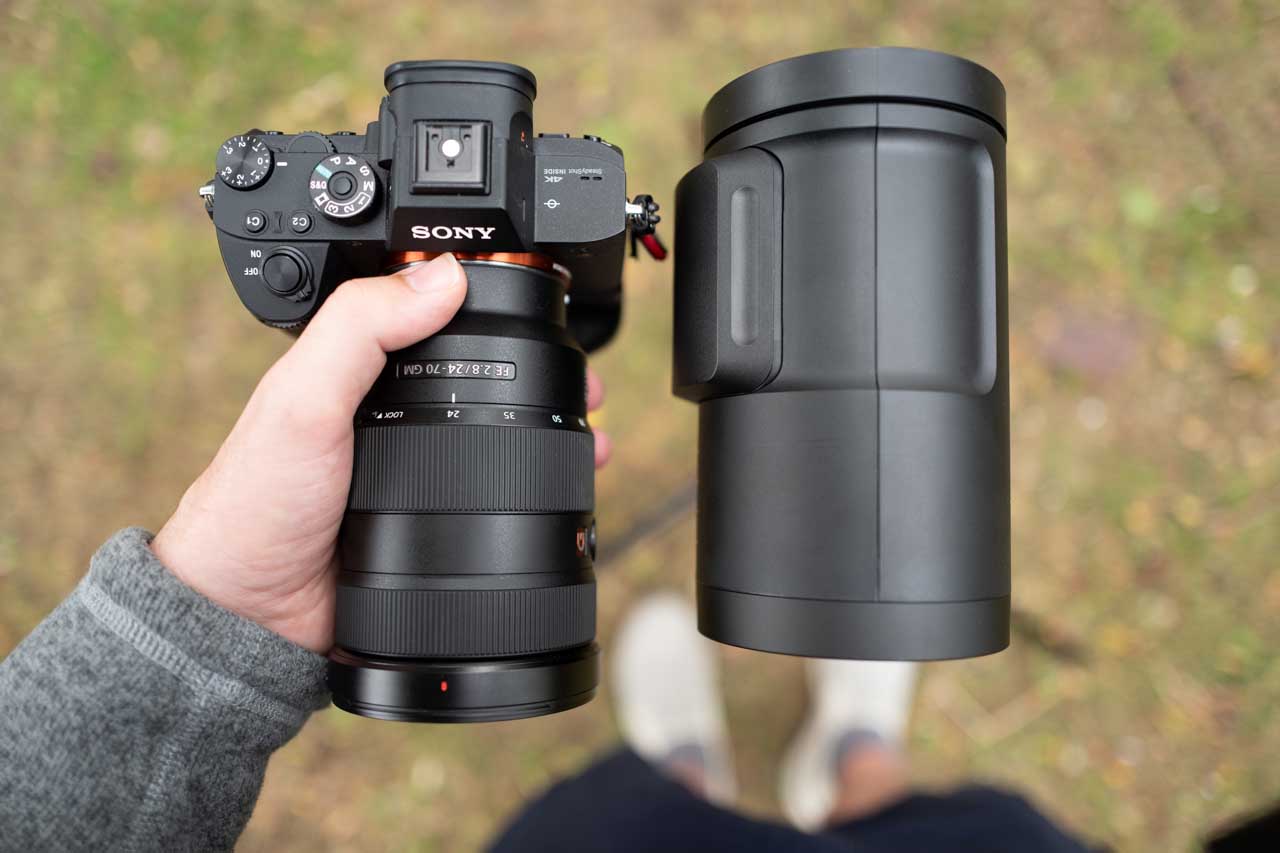
As you can see above, the Profoto B10 is around the size of a Sony A7RIII with a 24-70-GM lens attached. This means it’s great for dropping in a camera bag and taking with you. The light stand attachment is also detachable from the bottom of the light. Consequently, the B10 can fit in a space normally reserved for a larger lens.
Interface and Menu
I find the Profoto B10 simple and easy to understand with no real need to read the manual – it’s that easy. I was using the B10 within minutes of the postman knocking on my front door.
The back of the light is dominated by the super-sharp bright screen which shows you the selected channel for the flash, the current flash power (in 1/10th of a stop increments) and the juice left in the battery.
Also, there are three buttons on the back of the light. One button turns on and adjusts the modelling light, the big centre button adjusts the flash power and the third button turns the B10 on/off and lets you test the flash.
The big centre button, when pressed, allows access to the minimalistic function’s menu.
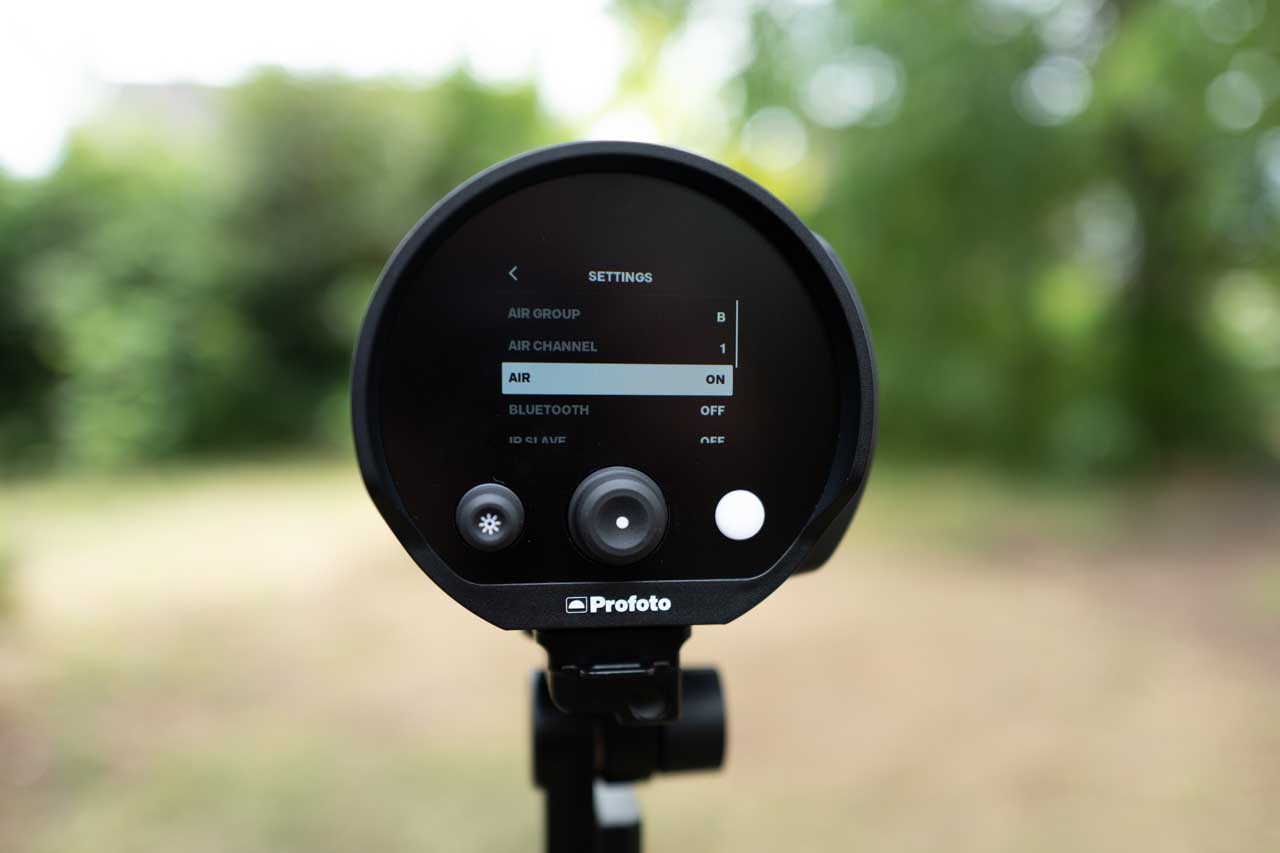
From the function menu, you can change the channel, the flash group, turn on/off the Bluetooth connection, initiate the slave mode, change the flash duration to ‘freeze’ or ‘normal’ and adjust the modelling light to be either proportionate or free power.
There is an advanced menu, but this hosts the sound and display settings – so not that advanced!
Battery
Profoto claims 400 full-power flashes from a fully charged battery. I believe that number.
I got through two headshot sessions on location and a PR gig at a local boxing club using a mixture of flash and the modelling light, and the battery was still showing 25% full. You can check the level by pressing a button on the back of the battery.
Should you start to run out of power during a photo shoot, you can either swap out to a spare battery or use the included mains charger to charge the battery while still using the flash. That’s a great feature.
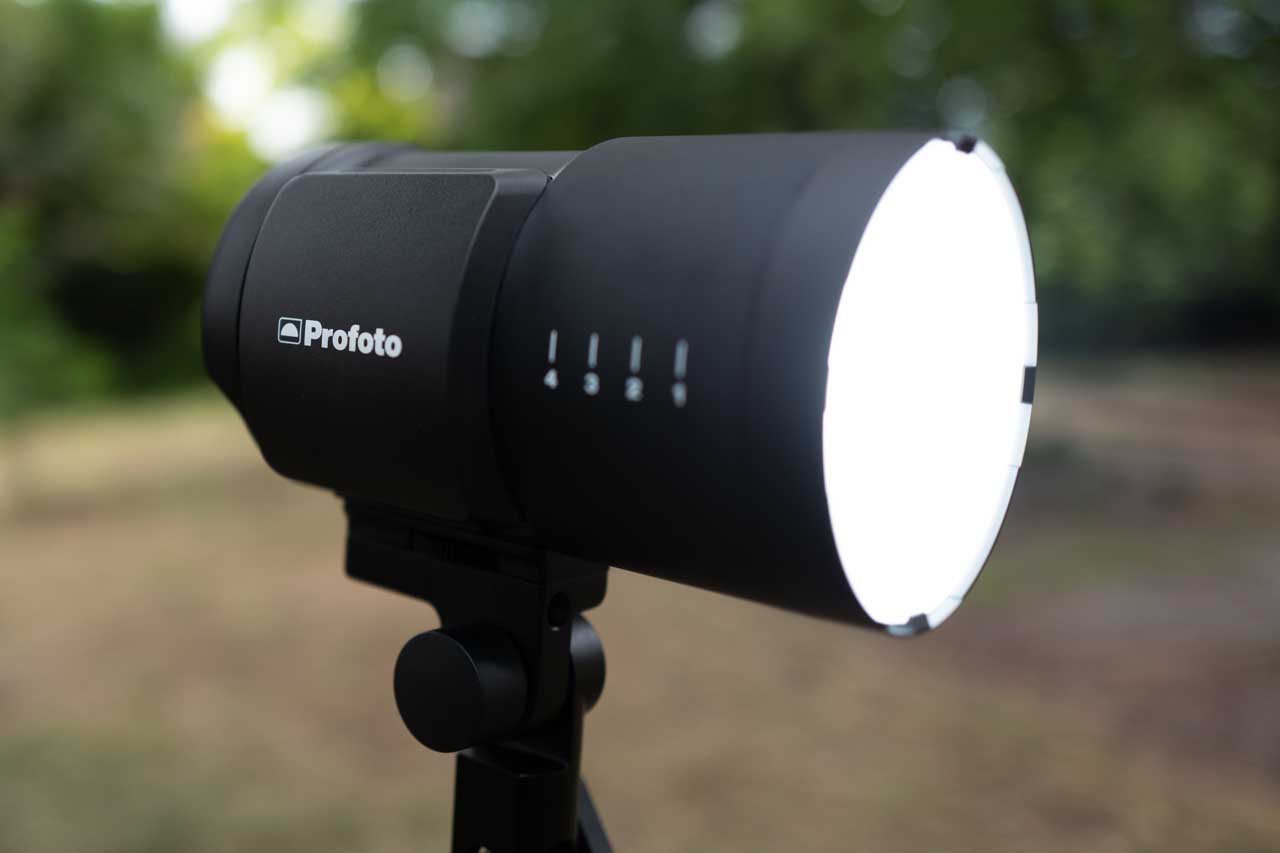
Video Light
A fresh new feature on the Profoto B10 is the video light. It’s essentially a more powerful modelling light. However, Profoto has added the ability to adjust the colour temperature of the video light without the need to use CTB or CTO gels to help match the colour temperature of the ambient light.
I currently use a Godox SL 60w for recording video interviews or doing some video intros for my wedding couples. However, it’s not colour temperature adjustable, and the internal fan can get quite loud. I’ve switched to using the B10 instead and has worked great so far.
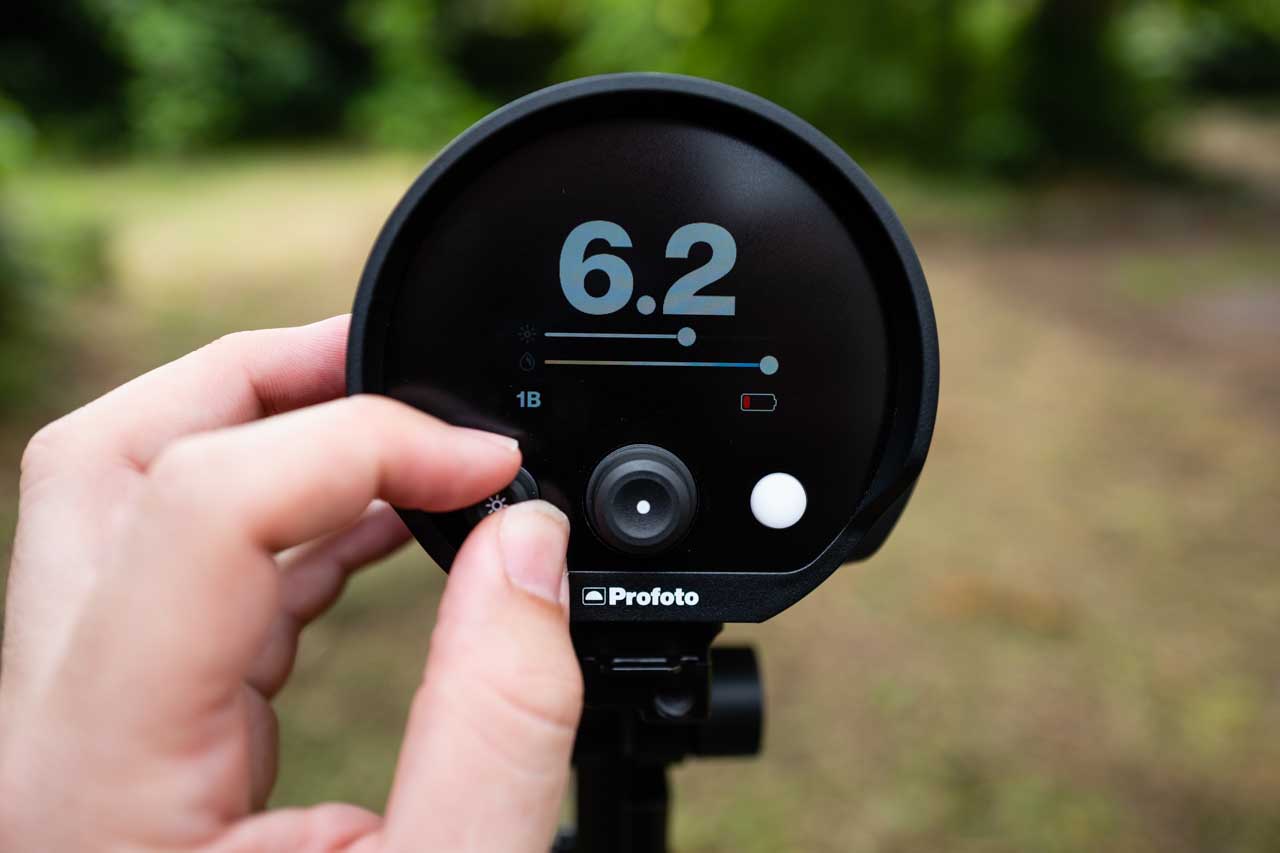
Bluetooth
The Profoto B10 has built-in Bluetooth connectivity. This allows you to control and adjust the flash power, modelling light strength and colour temperature directly from the Profoto app on your Apple mobile phone (currently not available for Android users).
The Profoto app has many other features which I will be going through in a future article here on Camera Jabber.
Light Modifiers
The B10 follows on from the other Profoto lights and uses the standard Profoto mounting system. This lets you slide the light modifier onto the front of the flash head and then clamp in place. It’s a much easier system than the Bowens ‘S’ Mount which I have become used too.
Profoto makes a host of light modifiers which work across the whole Profoto system. There’s everything from simple umbrellas to octa softboxes to a magnum reflector which can boost the power of the B10 by up to 2 stops.
Verdict
I have been super-impressed with the Profoto B10. It has worked flawlessly with my Sony Alpha A9 and the Sony A7RIII. I have had zero, and I do mean zero, misfires during three paid photographic jobs.
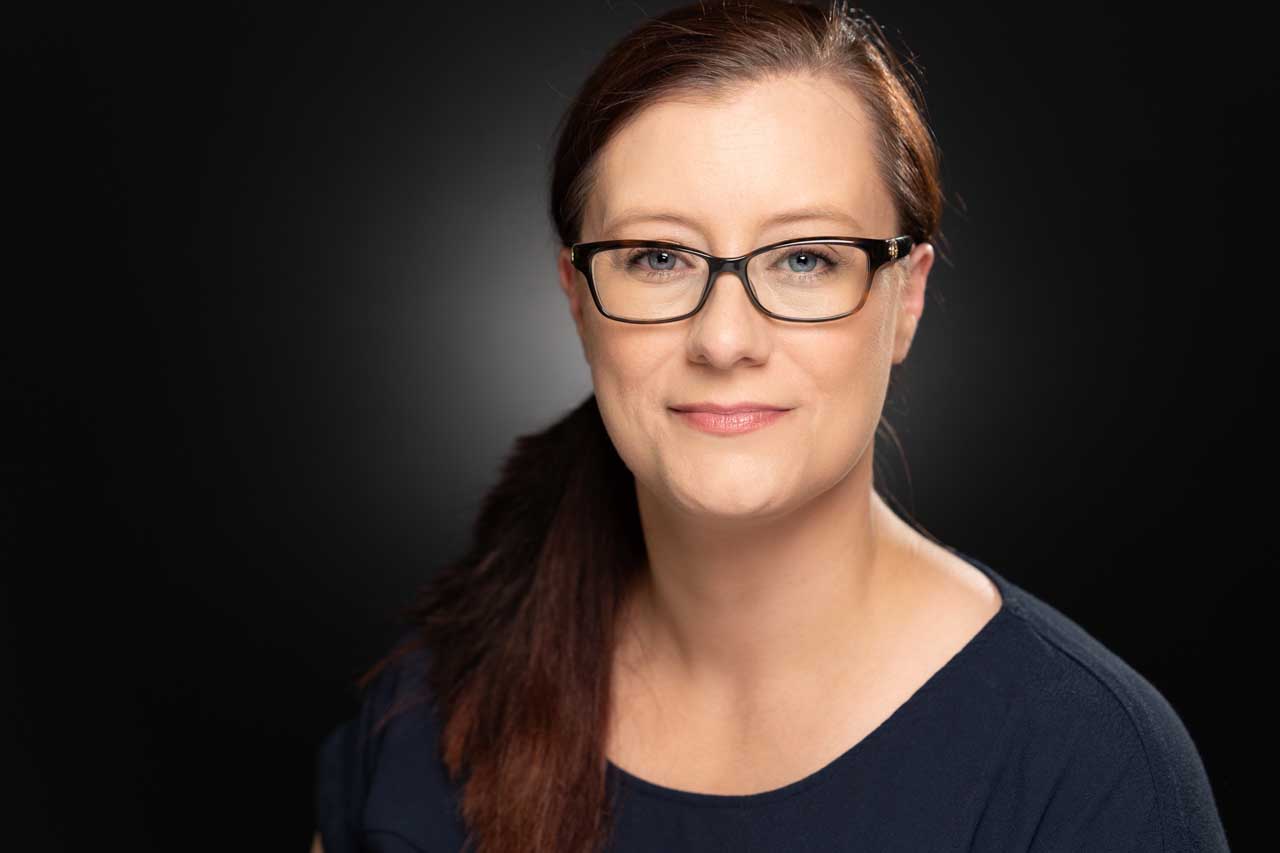
During the above headshot session, I used the B10 as a key light along with two smaller Profoto A1x’s to create a flattering lighting set-up. Using TTL mode to get a base exposure, I then adjusted the lights using the Profoto Air Remote to dial in the amount of power I was after.
There is no doubt that the price of this light will raise eyebrows when compared to say a Godox AD400 Pro which claims to have 400Ws of power. That’s a step-up compared to the Profoto B10’s 250wWs, but these numbers are just that – numbers.
In the real world, the Profoto B10, with its clever inbuilt flash reflector, produces enough light to do everything I will ever need to do. And given the sturdy build and Profoto’s reputation for making reliable equipment, I have little doubt that the Profoto B10 will work when I need it well into the future.
Should I buy the Profoto B10?
The only downside to the Profoto B10 is the price. If you are a hobbyist or someone that only occasionally uses flash in professional work, then it’s hard to recommend this light as a starting point into the Profoto ecosystem. By the time you have added in a trigger and a light modifier, you will be in the range of £1700 – £1900 for a single light set-up.
This light is aimed at professionals who need to have powerful flash options on location, wedding and portrait photographers for example who demand great build, reliability, compactness, great features and ease of use. But like everything in life, that does come at a price.
For a working professional, I highly recommend the Profoto B10, but get ready to re-mortgage the house to buy a second one! It does everything Profoto set-out to achieve, whilst also leaving room for the new Profoto B10 Plus.
